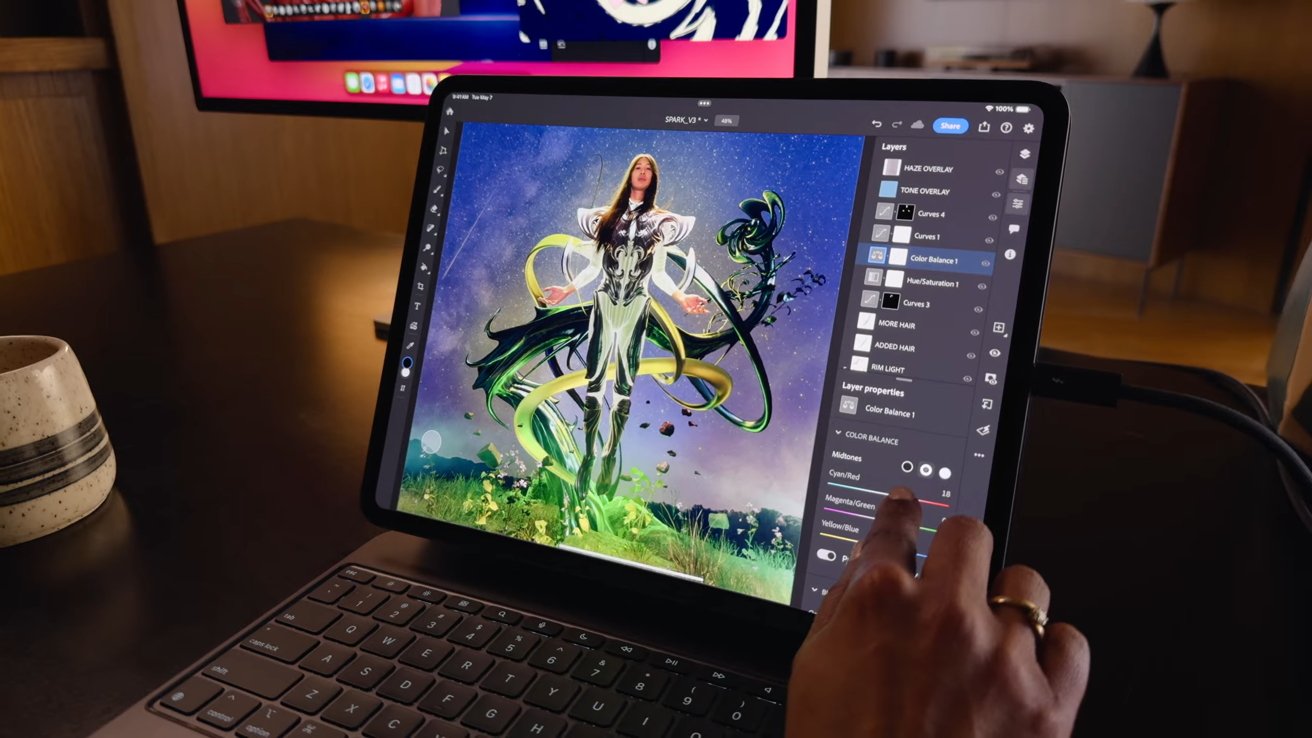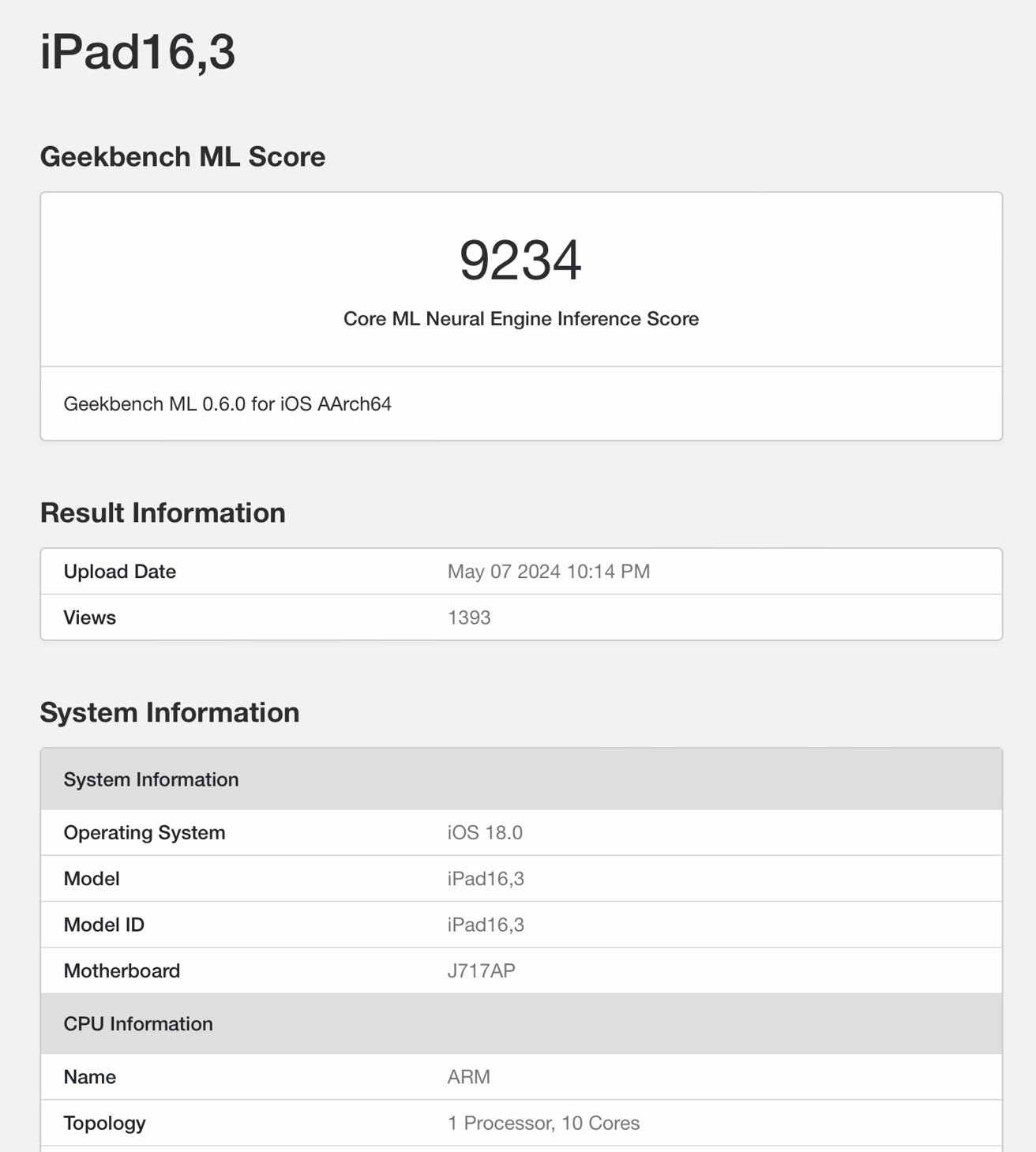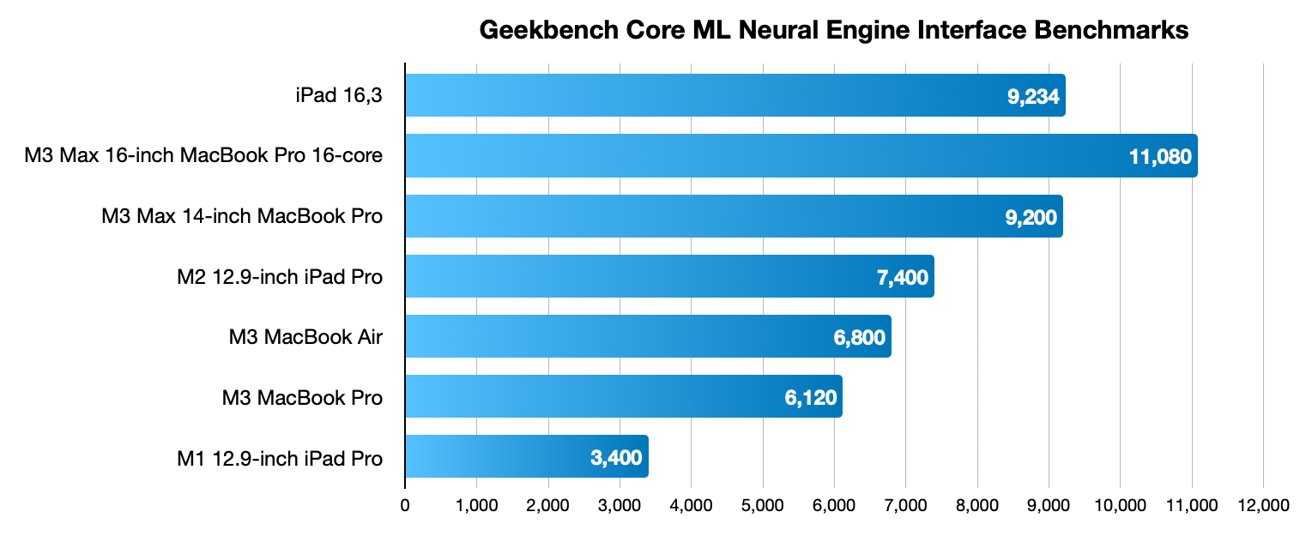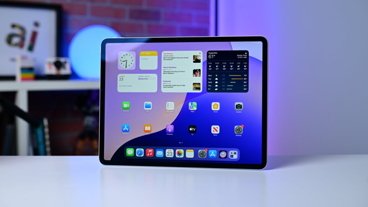If a single set of M4 benchmarks can be believed, the new higher-end configurations of the iPad Pro have a lead on the MacBook Pro with M3 processor for AI tasks — but not by much.
A new benchmark for the 12.9-inch iPad Pro with M4 and 10 cores has been posted to GeekBench overnight. In it, the assorted artificial intelligence workloads have perhaps been measured for the first time — but we're skeptical, considering that the benchmark appears to have been run on iOS 18.
If accurate, the score of 9234 on the "Core ML Neural Engine Inference" for iPad Pro is decent. It is not the best from an Apple Product.
The inference result comes in at about 10% faster than the fan-cooled M3 MacBook Pro. However, the M3 Max version of the 16-inch MacBook Pro run a 16-core configuration comes in at about 11,080. The 14-core 14-inch MacBook Pro with M3 Max comes in at about 9200 at a very similar price point to the 10-core iPad Pro.
Apple's M3 MacBook Air isn't fan-cooled, and hits a inference score of about 6800.
Going back to the iPad Pro lineup, the M2 12.9-inch iPad Pro came in at about 7400. The M1 12.9-inch iPad is much further behind at about 3400.
As we mentioned, the provenance of the data isn't clear, and there does not appear to be an accompanying CPU performance benchmark yet.
Apple's iOS 18 hasn't escaped into the wild which could be an indication of a fake. If the benchmark is legit, it may actually be lower than it could be. Apple's internal iOS versions in use the month before WWDC generally have lots of telemetry bogging down system performance, and aren't fully stable.
Regardless, time will tell soon enough. Customers who ordered early will start getting machines on May 15. Early reviews are expected on May 13.
 Mike Wuerthele
Mike Wuerthele









-m.jpg)






 Thomas Sibilly
Thomas Sibilly
 Wesley Hilliard
Wesley Hilliard
 Marko Zivkovic
Marko Zivkovic

 Malcolm Owen
Malcolm Owen

 Amber Neely
Amber Neely










8 Comments
Using my iPhone, I find the dictation quite good, with words, grammar, and punctuation. Speaking at a reasonable rate and clearly, obviously, makes a difference, as with any dictation input method. I have very few problems with Siri dictation.
My guess is that the extra GPU oomph required to drive the new display is (not coincidentally) the primary reason for the improvement from previous models.